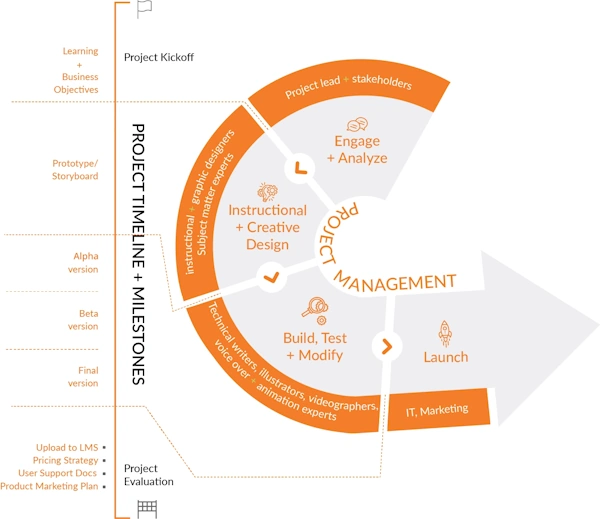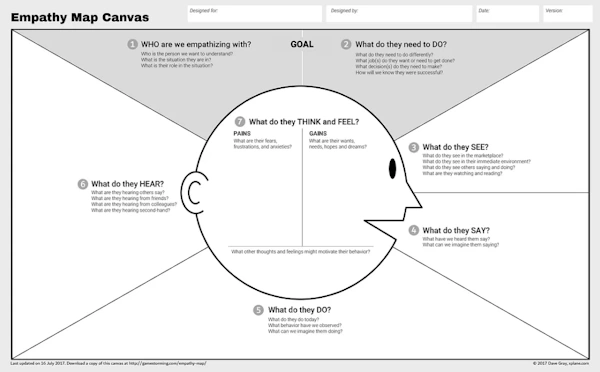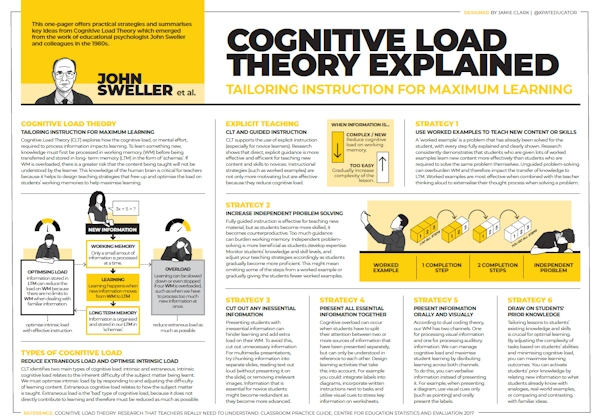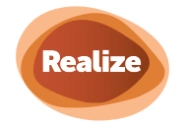On the surface, elearning content development appears to be a simple task of cutting and pasting existing content into an online template that learners can read. However, online content development is much more complex, involved, and critical in creating an online course. Done well, and you get an Oscar-winning production. Done poorly, you end up with a 2-star IMDB-rated movie that everyone avoids like the plague.
Why eLearning Content Development Is So Important
Everyone has memories and examples of appalling eLearning they’ve experienced. Unfortunately, there are too many examples of substandard eLearning that don’t provide good instruction and that the learner ends up despising. Often, this results from simply cutting and pasting text from PowerPoint slides or watching hours of talking head videos, leading to shoddy eLearning courses made cheaply that don’t achieve their learning objectives.
A crucial aspect in designing courses is the eLearning content development phase, which results in seven primary benefits when correctly developing training content for online delivery.
It Defines The Learning Experience
In eLearning content development, we determine how learners will
- engage with the material
- understand key concepts and
- achieve the learning objectives.
Well-constructed online content development ensures learners have a structured, logical, and cohesive learning path.
Builds Trust
Whether educating employees or the general public, you nurture a relationship. You’re not developing training content to create content but to provide your learners with something of value. Understanding your audience well allows your eLearning content development process to make their time worthwhile.
Being consistent in delivering amazing educational content will keep them coming back for more and the more trust they’ll build with you.
Supports Learning Outcomes
We must align the online course development with specific learning outcomes. The development phase ensures that all content directly supports these outcomes, helping learners gain the required knowledge or skills efficiently. It also eliminates superfluous content that is not needed and results in a more efficient and streamlined learning experience.
Ensures Consistency and Accuracy
Developing training content ensures consistency in messaging, language, and tone throughout the course. It also involves verifying information for accuracy, ensuring learners receive reliable and current data.
Engages Learners
eLearning content development needs quality content to maintain learner interest and engagement. During development, our instructional designers create interactive elements, multimedia, and assessments that enhance understanding and make learning more dynamic.
Adapts To Learner Needs
During online content development, accessibility, inclusivity, and adaptability are essential. We craft a course to accommodate various paces and levels of prior knowledge, making it relevant to your target audience(s).
Building Brand Recognition
By creating course content, you are defining your brand with your audience of learners. Do you want that to be associated with a shoddy, substandard instructional product? It becomes recognizably yours by delivering content aligned to your brand. Eventually, when someone needs your type of product or service, you’ll be at the top of their mind.
Reusing The Content
Did you think all this content creation would be used once and gone forever? Of course not! You can repurpose images, text, videos, and other media from the eLearning content development process for different purposes.
Process To Create eLearning
Creating engaging and interactive eLearning with instructional merit and meeting the intended learning objectives isn’t simple.
Our process (below) is an iterative one. Working together, we determine what you need to achieve, develop the learning objectives, and map out the instructional activities required. We examine and understand your target audience to know their wants, needs, and desires. We also work with any existing media assets you have and determine what additional elements might be needed. This can include more copy, assets, decisions around scripts, and voice-over narration. And in developing eLearning, we work closely with your subject matter experts.
eLearning Content Development Process
At Spark + Co., our online content development process occurs primarily in the Engage + Analyze and the project’s Instructional + Creative Design phases of our eLearning course design process .
Developing training content to create eLearning is similar to converting a novel into a movie. First, we need to rewrite the book into a screenplay. Similarly, we take your content in various forms and organize and convert it into engaging eLearning. In developing content, we usually work with your subject matter experts, but if requested, we can provide subject matter experts.
Factors that impact the amount of eLearning content development work that’s required to transform your content include
- Is the content production ready?
- The type of course
– Compliance/informational/awareness
– Follows a process
– Task or role-based training
– Technical applied or scenario-based learning
– Courses to result in behavioral change
- Level of interactivity of the course
- Course length
- Production Level – do you require a basic production level, or do you need custom graphics, slick videos, enhanced images, voice-over, and other media?
For example, if your content isn’t production-ready, or you require a course with a very high level of interactivity, then the amount of online content development needed increases. Similarly, we have to do more eLearning content development for a course intended to change a learner’s behavior than for a course making people aware of something.
In our projects, we already factor in that a moderate level of eLearning content development will be required. That is, the content you provide is largely production-ready. However, we will organize and analyze it to ensure it’s sufficient for the learning objectives. We will also develop quiz questions or write activities for scenarios. We will also do a moderate amount of rewriting, which may require the involvement of your subject matter experts.
Suppose you require us to do a high level of online content development, such as research and creating a significant amount of content from scratch. In that case, we do that, but an additional surcharge may be necessary. In most cases, however, this is not required.
If you have a fixed budget for your project, we can manage the process to stay within your budget in several ways. For example, suppose your content is not production-ready and requires additional development on our part. In that case, we might decide together to reduce the course length or the level of interactivity to stay within your budget.
7 Critical Components Of ELearning Content Development
There are seven main components involved in developing training content:
- Audience Profiling
Understanding your target audience is crucial. This involves identifying their backgrounds, preferences, knowledge gaps, and specific needs, which guide the tone, depth, and type of content created. - Instructional Strategy
In this stage we develop an instructional approach that best fits the objectives of your training, your audience, and the type of training you are undertaking. - Storyboarding
In this step of eLearning content development, we outline the course structure in detail. Our instructional designers create a visual flow of the course modules, lessons, and multimedia elements, ensuring the content is sequenced logically with instructional activities. - Writing The Course Material
This includes writing text for lessons, instructions, and supplemental materials. Online content development writers ensure the material is clear, concise, and aligned with the learning objectives while keeping the tone engaging and appropriate for the audience. - Developing Assessments
We develop quizzes, self-assessments, assignments, and interactive activities to test learners’ understanding and reinforce key concepts. They should align with the course’s learning outcomes. - Multimedia Creation
This involves designing and developing graphics, animations, videos, and other multimedia elements that enhance comprehension. Multimedia must be both visually appealing and educationally effective. - Interactive Elements
To increase engagement, we use interactive components such as simulations, case studies, and problem-solving exercises in developing training content. These elements encourage active learning and practical application of knowledge.
“Thank you for the final edits and congratulations for completing another awesome course! I really appreciate the hard work put into this course to make it engaging, valuable and beautiful while working under a tight timeline and finishing before the deadline!!”
WeBC Comments on their Multi-Course Program
Additional Factors In Elearning Content Development To Consider
There are many essential aspects of online content development to consider. In addition to the overall components above, some overarching aspects require consideration.
Elearning Content Development For An External Verses Internal Audience
A lot of online content development is focused on internal or employee training. But what if your audience isn’t employees? External audiences are people outside the organization: customers, suppliers, distributors, unions, stockholders, patients, potential employees, trade associations, special interest groups, government agencies, the press, and the general public.
An external audience differs considerably from an internal audience. Employees are often required to take a training course, while external audiences choose whether to take the course or not. So, as part of the eLearning content development for external audiences, we also need to consider questions such as,
- How can we design your training so people choose to take your course?
- How do potential participants learn about the existence of your course and feel compelled to sign up?
- What are the critical needs of the people taking the course, and how can we best respond to them?
What differentiates Spark + Co. from most other companies is that we take a “product approach” to designing and developing e-learning. We use our expertise and knowledge of instructional design and add innovative approaches from product designers and developers. It ensures that we provide an instructional product that delivers value to your audience when developing training content.
A critical aspect before embarking on eLearning content development is to understand your audience. A tool we use at Spark + Co. for audience analysis is the Empathy Map Canvas, developed by Dave Grey based on initial work by Alex Osterwalder.
Accessible Online Content Development
At Spark + Co., we design and develop accessible and inclusive eLearning for all learners with a range of abilities, backgrounds, or circumstances. It ensures that your online content development and platforms remove barriers and provide alternative means of interaction and representation. It involves writing, image selection, instructional design, and technical development settings and includes
- Alternative text descriptions (alt-text) for images and multimedia content to assist learners with visual impairments
- Keyboard navigation and compatibility with screen reader technologies for learners with motor or vision impairments
- Adjustable font sizes and contrast options to accommodate learners with visual impairments
- Compatibility with assistive technologies such as screen readers, voice recognition software, and alternative input devices
Inclusive eLearning content development requires embracing diversity and fostering a sense of belonging for all learners. It goes beyond addressing accessibility issues to actively promoting equity and inclusion. It includes:
- Writing in plain language to ensure all learners understand the course content
- Catering to diverse audiences by offering a range of media, such as text, audio, video, and interactive simulations
- Incorporating diverse perspectives and cultural references to reflect the experiences and backgrounds of learners from different cultures and communities
- Offering flexible learning pathways and accommodations to support learners with diverse needs and preferences
- Fostering a sense of community and belonging through collaborative activities, peer interactions, and supportive feedback mechanisms (where appropriate)
“A beautifully designed platform. A lot of love and creative talent has gone into this online course in Child Honouring – philosophy for the re-enchantment of our world”
Co-UNESCO Chair, Higher Education, University of Victoria.
Cognitive Load
Cognitive load theory helps us to understand how people learn and store new information and the types of instructional practices that best support learning. It draws on working and long-term memory characteristics and their relationship to explain how people learn. Cognitive load theory emerged in the late 1980s from the work of John Sweller and his colleagues. The process of eLearning content development requires that the cognitive load placed on the learner does not overload their ability to process and recall the information. Jamie Clark designed a helpful tool for managing this in developing training content.
Developing Training Content Using Evidence-Based Learning
Accuracy, relevance, and up-to-date information when developing training content are always important. However, it’s critical for some courses only to have evidence-based learning. For instance, ensuring that the eLearning content development is evidence-based in healthcare, academia, and related topics is vital.
At Spark + Co., we regularly work with experts who help us with sourcing, editing, and vetting content. This includes clinicians, researchers, medical doctors, psychiatrists, psychologists, and experts in legal, policy, finance, and many more. When developing training content to ensure it is evidence-based, we use the Currency, Relevance, Authority, Accuracy, and Purpose or “CRAAP” model developed by California State University to evaluate sources.
“It was an absolute pleasure to work with Holly and Spark + Co staff. Holly’s leadership and expertise were pillars to the success of this project. In addition to authoring the course, Spark + Co staff contributed by providing creative ideas for interactions and answered technical questions from the team. We are very satisfied with the course”
Pacific Institute For Climate Solutions
Requirements Of Online Content Development For Different Types of Courses
The amount of online content development work required can vary significantly. Below, we provide precise examples of actual eLearning content development activities needed for various types of courses.
All Courses
No matter what the online course is, at Spark + Co., we will always do the following in developing training content for every course.
- Establish reading grade level
- Review/edit the writing style – capitalization, lists, tone
- Apply plain language guidelines for accessibility and usability
- Write a script if voice-over is used (computer or human)
- Rewrite content to ensure consistency
- Validate what content is needed
- Complete basic copy editing
Compliance, Awareness, And Process-Based Courses
Courses that are compliance-based, informational/awareness-focused, or follow a process require additional online content development. Examples of such courses include
- Anti-money laundering
- Environmental awareness
- On-boarding of new employees
These types of courses require several additional eLearning content development activities, including:
- Analyzing The Content
– Reviewing the course outline, flow, and sequencing
– Identifying gaps in the content
– The quality of the content – for example, is it current, accurate, and relevant (see later for details on Evidence-Based eLearning content development)
– Does the content address the course goal completely?
– Which of the learning objectives does each piece of content support?
- Create a course outline and review the content in terms of instructional activities, interaction, and learner engagement
- Assess what would I learn if I took this course. Is it enough?
- We prepare a first draft of the course content for a subject matter expert (SME) to review and provide feedback
- Identify any content gaps and work with SME to address the gaps
- Guide an SME in writing missing content, including how many words, examples, and reading grade level
- Write scripts for voice-over content and videos
- Write quiz questions and knowledge checks
Task/Role-Based Training And Applied Or Scenario-Based Learning
The eLearning content development for task, role-based and applied or scenario-based courses requires more analysis of the task, outcome, and users. These courses require different tasks or processes that people in different roles must follow. This requires a deeper understanding of the environment, constraints, and consequences of applying what a person has learned. The purpose is to support applied learning; as a result, it needs a more detailed understanding. This often requires more involvement of an SME because they will provide the necessary context for the instructional activities.
Examples of these types of courses include:
- Software training where there are different levels of users
- Insurance claim processing where there are different roles for data entry, claims adjudication, and sign-off required, and
- A manufacturing process where there are different roles for operators, maintenance personnel, and supervisors
These courses often have existing content, but it’s not written in a way that supports the required learning. We don’t want all the roles to go through all the training elements, so it requires a lot of rewriting to create learning paths for each user role.
The type of eLearning content development in these situations consists of
- Scenario outlines or complete scenarios – we write these with a challenge, choice, and consequence. They are typically written in the first person (what would YOU do?)
- Case studies – we present these types of online content development as a problem requiring advice on a range of options, none of which are perfect. The goal is for the learner to review them all and come up with their own answer. Often, we write these from a 3rd person’s perspective and invite the audience to advise that person
- Post-mortems are after the fact and intended to be an example where someone is sifting through facts or past actions to see if they would do the same. Or if they can find flaws or alternative answers. It’s more investigative and asks, ‘What went wrong?’ or ‘How can we ensure this doesn’t happen again’
- Day-in-the-life of – a way to shadow someone you want to emulate or learn from. They put someone in the exact situation you want the learner to relate to so they can see someone in action. It adds a role modeling component to the learning but requires additional eLearning content development
- Narrative vignettes or stories are illustrative examples and can be very short. They are intended to give a personal point of view and convey a lived experience. It’s critical to set the precise tone and character correctly
Courses Resulting In Behavior Change
Courses that aim to result in lasting changes in the learner’s behavior require more customized eLearning content development. Often, they need writing from scratch using SME or existing content. In some cases, additional research could involve us providing a subject matter expert to help develop the content.
The type of eLearning content development in these situations consists of
- Stories can be simple or elaborate, but we write them in a story structure and format
- Dialogue – how would real people talk to each other about this topic? What would be some challenges or problems they’d face?
- Scenario outlines or complete scenarios – we write these in the first person with a challenge, choice, and consequence (what would YOU do?)
- Compelling reflection questions are intended to evoke a mental rehearsal and are written to have them think about the content and provide subtle reinforcements of the instructional material. This eLearning content development technique can significantly help a learner transfer knowledge to long-term memory
- Situational quizzes – developing quizzes and knowledge checks that assess learning, are well-constructed and nuanced, and provide the right level of challenge for a diverse audience
- Games – writing game-like activities that are appropriate for the audience and the content is a skill. But these can provide powerful instructional activities.
- Challenges – eLearning content development using applied learning activities presented as challenges can be very effective. However, we write these to compel the audience to do something outside the training course. For example, interpreting regulations, maintaining a dialysis machine, or measuring your carbon footprint. This helps the learner to apply the new behavior in the real world
- Supporting materials – supporting the required behavior changes also requires developing training content outside an eLearning course. The eLearning course can provide knowledge and some practice, but the learner needs to practice in the real world if the desired changes are going to be implemented and are long-lasting. This can involve developing training content such as “changemaker’s toolkits, kitchen table conversation guides, social sharing posts, calls to action, and many other elements that can assist the audience in leading change outside of an online course
“I highly recommend working with Spark + Co. and I would hire them again in the future.”
Concert Properties – ‘Respectful Workplace and Respectful Hiring For Managers’
What To Avoid With eLearning Content Development
We’ve described above the essential steps, processes, and tools to ensure your online content development allows you to create the impactful learning you desire. So, let’s quickly review what not to do when developing training content.
1. Not Understanding Your Audience Well Enough
Understanding the target audience for your training is critical, especially if you are creating the training for an external audience. While you can mandate your employees to take a course and understand their needs, it is important for an external audience, and it is paramount.
2. Cutting And Pasting Content
The analogy we use is that eLearning content development is like converting a novel into a movie. Cutting and pasting content from a PowerPoint deck, or using a lot of ‘talking-head’ videos isn’t going to lead to an Oscar-winning instructional product.
3. Cognitive Overload
Avoid overwhelming your learners with content, and ensure that you optimize and pace their cognitive load. Flooding the learner’s brain with too much information at once can lead to cognitive overload.
4. Including The Kitchen Sink
Be ruthless when cutting out content that isn’t directly linked to one of your learning objectives. If you think something is helpful to your audience but isn’t directly linked to a learning objective, provide optional ways for them to explore the topic independently.
5. Passive Learning
Having people passively read reams of content will only lead to disinterest and limited knowledge retention. Focus on learner engagement in your eLearning content development process and include an appropriate amount of engaging interactive elements like quizzes, discussions, simulations, and other instructional techniques. Neglecting to create an emotional connection with learners can lead to content that fails to resonate and be memorable.
“Thanks so much for your work on this, it looks so much better and much more patient-friendly! They really do look fantastic and so much easier to navigate for the adult learner. Your expertise, attention to detail and creative skills are very apparent.”
BC Renal comments on their program on peritoneal dialysis for patients, caregivers, and the clinical team supporting them.
6. Using All The Latest Tech
Technology and tools should only enhance the learning experience and support learners. Avoid including tech tools purely for the sake of using them.
7. Inaccessible Learning
Accessibility ensures that all learners can access and navigate course content effectively. Usability is also important. Avoid developing training content and courses that don’t have intuitive navigation, clear instructions, and a user-friendly interface.
8. Leaving Feedback And Knowledge Checks Till The End
Avoid having an hour-long online course and including a 5-minute quiz at the end. Without regular assessments, learners may struggle to gauge their progress and identify areas for improvement. Assessments not only reinforce learning but also provide valuable feedback. It also includes a variety of assessments, such as quizzes, case studies, and practical exercises.
At Spark + Co., we are at the forefront of custom eLearning development and online courses, proudly serving a diverse clientele since 2007. Elearning content development is a crucial phase in the success of your online course. Done well, it can result in training that achieves transformative results. But it’s not a straightforward task to accomplish. As a leading custom eLearning development company, we use our decades of experience in online content development to guide you seamlessly through the process. For more information, contact us or schedule a complimentary consultation.






